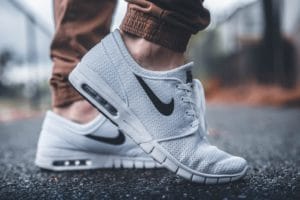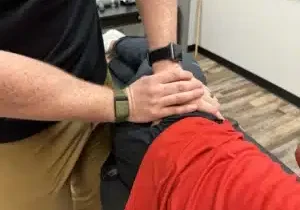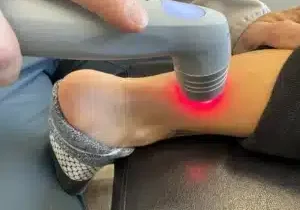 Slow Down the Wear & Tear
Slow Down the Wear & Tear
On BOTH your body AND your running shoes
Similar to food, running shoes have a shelf life, whether we wear them or not. Shoe materials deteriorate over time, both with mileage and when they sit in your closet slowly breaking down. As a humorous thought, maybe running shoes should have an expiration date stamp on the material to prevent using ‘expired’ shoes.
Rotating Your Shoes
Research has shown that rotating your shoes has been proven to prevent injuries.
By rotating from model to model, you are allowing your strike pattern, middle stance and toe off, to change just enough to allow your body not to overstress the same muscles and joints. When running in the same model over and over, your feet get used to the same feel. Rotating through different pairs of shoes can allow the 200 different ligaments in the foot to be stretched and be engaged in different patterns of use.
A recent sports-science medical study actually showed that runners who rotated through 2 or more different pairs of shoes throughout the duration of the 22-week study had a “39% lower risk of running injury than those who almost always ran in the same shoes”. (www.runnersworld.com/newswire/study-backs-rotating-shoes-to-lower-injury-risk)
Recovery
Much like the body needs time to recover and respond after long or difficult runs, your shoes do as well! The outsole of a shoe is made of high-density foam, which compresses after long periods of stress and pounding. It actually takes about 24 hours for the foam of a running shoe to fully decompress after either running or walking in them. By allowing them to decompress fully, you allow the shoes to provide the cushioning and support that you originally had out of the box.
My advice is to get more than one pair of well fitted running shoes and rotate through them. You will find that your stability improves and you have less frequent injuries.
Dr. Bruce Harris
Reference: www.runnersworld.com/newswire/study-backs-rotating-shoes-to-lower-injury-risk
How Manual Therapy Can Be Your Key to Pain Alleviation and Overall Wellness
Discover the transformative power of manual therapy for pain alleviation and wellness in our blog ‘How Manual Therapy Can Be Your Key to Pain Alleviation and Overall Wellness’.
Read MoreThe Role of Chiropractic Care in Sports Injury Rehab: A Deep Dive
Explore the essential role of chiropractic care in sports injury rehab in our comprehensive blog ‘The Role of Chiropractic Care in Sports Injury Rehab: A Deep Dive’.
Read MoreHow Your Local Chiropractor Can Help You With Back and Neck Pain
Understanding back and neck pain Back and neck pain can be caused by poor posture, muscle strain, injury, or underlying health conditions. The pain may range from mild to severe and can affect your daily activities. Common symptoms include stiffness, muscle spasms, and limited range of motion. In some cases, the pain may radiate to…
Read MoreRehabilitation Services for Sports Injuries: A Comprehensive Guide
Understanding sports injuries and the need for rehabilitation services Injuries during sports are common and can affect athletes of all levels. Rehabilitation services play a crucial role in helping athletes recover from these injuries and get back to their peak performance. With the right guidance and treatment, athletes can regain strength, flexibility, and mobility, ultimately…
Read MoreUnderstanding Posture Therapy: Techniques and Benefits
What is posture therapy? Posture therapy involves exercises and techniques to improve your body alignment and position. It aims to correct postural imbalances and relieve pain and discomfort caused by poor posture. The therapy focuses on strengthening muscles and stretching tight areas to achieve proper alignment of the body. It can also include education on…
Read MoreThe Science Behind Foot Pain Therapy: Understanding the Basics
What causes foot pain? The most common cause of foot pain is wearing ill-fitting or unsupportive footwear. High heels and narrow toe boxes can put excessive pressure on the feet, leading to issues like bunions and corns. Flat feet or high arches can also contribute to foot pain because they affect the alignment and distribution…
Read More






